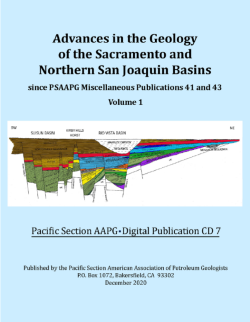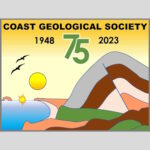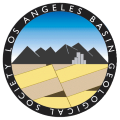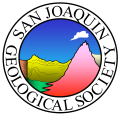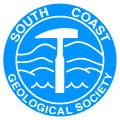
History

History of the Pacific Section AAPG 1924-2001
The ancestral organization of the Pacific Section AAPG, the Pacific Society of Petroleum Geologists, was formed in 1924. This Society became the Pacific Section of The AAPG in 1925.
The following early history of the PSAAPG is excerpted from “62 Years: History of the Pacific Section American Association of Petroleum Geologists, 1924-1985” edited by Charles F. “Fred” Green (PSAAPG MP-36). Portions of this history also appeared on the occasion of the Societies 25th anniversary (1948, PSAAPG PPG vol. 2, no 6, p.2).
The years immediately following World War I were good ones for the California Oil Industry. On the west coast, 1919 saw the discovery of Santa Fe Springs near Whittier. Huntington Beach was discovered in 1920, Signal Hill (now Long Beach) in 1921, Torrance in 1922, and Dominguez in 1923. These fields, characterized by thick sections of highly productive sands, contributed to the continuation of California as a principal oil producing province of the United States, and fostered the growing employment of technical personnel, chiefly geologists.
The American Association of Petroleum Geologists was formed in 1917, with headquarters in Tulsa. Its members were scattered throughout the oil producing areas of the United States. The idea of a local society of AAPG members had its origin in the San Francisco Bay area. Early in 1924, Earl Gaylord brought word to Los Angeles that he had discussed the subject with Roy Collom, J. A. Taff, and the Gester brothers. Earl enlisted the services of Frank Hudson to promote the idea in southern California. Meetings of local AAPG members at Los Angeles and San Francisco in June, resulted in the appointment of Roy Collom, Howell Gester, Bob Moran, Dan Nolan, and J. A. Taff to a committee to prepare by-laws for a California association of members, designed to become a local section of the national society, and to make arrangements for a technical and business meeting at Los Angels in the fall.
This first convention of the PSPG was held September 26 & 27, 1924 in Los Angeles. The first account of the Society”s activities was a report on this convention, which appeared in the AAPG Bulletin (1924, Pacific Coast Meeting of Petroleum Geologists: Bull. of AAPG, vol. 8, p. 838) and was provided to the Bulletin by Frank S. Hudson.
The Hotel Alexandria in Los Angeles was chosen to host the 1924 meeting. At the technical Session 16 papers were presented. The technical papers covered a great variety of subjects, from California throughout Alaska to China, and from well spacing through geology to oilfield waters. The maximum attendance at the technical sessions was 130, and 101 were at the dinner. The registration list shows 49 AAPG members and 60 guests. The names of the latter make particularly interesting reading, as the majority have since become members and many proved to be very active members.
During this first convention, the members in business session, with Frank Hudson temporary Chairman, formed the Pacific Society of Petroleum Geologists and elected Howell Gester chairman and Roy Morse secretary-treasurer. At the business meeting a committee on organization (which had obviously already been hard at work on a constitution) was adopted. Also, preparation of a petition to the American Association of Petroleum Geologist for admission as a regional section was authorized.
In 1925, the PSPG petitioned AAPG to become a Regional Section of AAPG. The petition was accepted at the National AAPG Convention held in Wichita in 1925. On March 26, 1925, the Pacific Section of AAPG became the first Chartered Section of the National AAPG and history was made. During the year 1924-1925 a total of 97 members paid dues to the Pacific Section.

